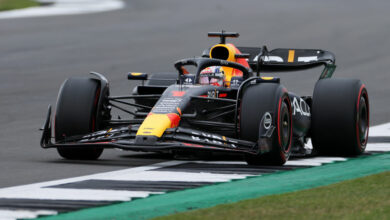Alpine Team Boss Bruno Famin Clarifies Strategy Behind Controversial Gasly-Ocon Swap at Japanese GP
In a dramatic twist during the Japanese Grand Prix, Alpine’s team orders left driver Pierre Gasly dumbfounded, leading to a public defense by team boss Bruno Famin. The team’s last-lap decision to have Gasly let Esteban Ocon pass was a strategic move for maximizing points, though it sparked notable controversy and outrage from Gasly.
Key Takeaways:
- Controversial Team Order: Alpine’s Pierre Gasly was instructed to let his teammate Esteban Ocon pass during the final lap of the Japanese Grand Prix, leading to a tense situation and Gasly’s overt frustration.
- Gasly’s Dismay: Having led for a significant portion of the race, Gasly was bewildered by the decision, especially since he was on fresher tires and had the potential to overtake.
- Team’s Perspective: Team boss Bruno Famin justified the swap as a strategic move aimed at maximizing team points, highlighting the importance of considering the team’s overall performance.

The Japanese Grand Prix for the Alpine team was anything but ordinary, with a decision in the final moments of the race stirring up a mix of strategies, emotions, and controversies. Pierre Gasly, who had been leading ahead of his teammate Esteban Ocon for a considerable duration, found himself in a bewildering situation during the final lap. Following a series of strategic pit stops and position changes, the drama peaked when Gasly, equipped with fresher tires, was ordered to yield to Ocon.
Gasly’s reaction was a mix of disbelief and frustration. He openly expressed his dismay over the team radio:
“Wait, what the ****, mate? You’re kidding me. What are you saying? I was faster. I’m on fresher rubber. I would’ve overtaken him anyway.”
This response encapsulates the conflict drivers often face between personal ambition and team strategy. Despite his initial resistance, Gasly complied with the order but did not shy away from labeling it a “complete joke” post-race.
Esteban Ocon, on the receiving end of this order, had a different perspective. He regarded the decision as a manifestation of “good teamwork,” underlining the importance of maximizing points for the team. Ocon recognized the complexity of the situation and hinted at the necessity for future discussions and reflections within the team.
Bruno Famin, at the helm of Alpine’s team management, defended the decision. He emphasized the strategic nature of the move, aiming to leverage Gasly’s tyre advantage for a better team position. Famin explained:
“The opportunity was a close one and we decided to swap positions on track with a view for maximising the team result by giving Pierre the chance to chase eighth place.”
Famin’s statement underscores the delicate balance team bosses must maintain between individual driver interests and the collective goal. His emphasis on team interest highlights the often-unseen intricacies of Formula 1 team management and strategy.
In conclusion, the incident at the Japanese Grand Prix sheds light on the multifaceted dynamics within a Formula 1 team. While the drivers are the stars on the track, decisions like these remind us of the critical role team strategies play in shaping the outcome of a race. As Alpine navigates through these internal dynamics, the incident remains a talking point, reflecting the complexities of teamwork and strategy in the high-stakes world of Formula 1 racing.



